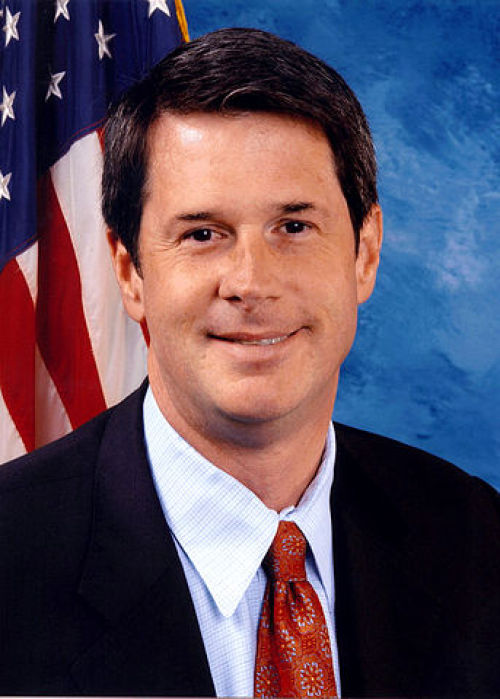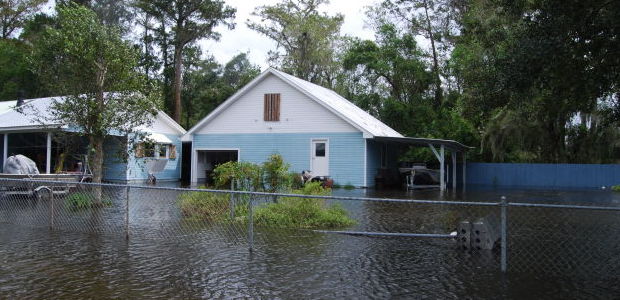Jury: Teen guilty of armed robbery
April 23, 2013
Vitter bill would block banking bailouts
April 23, 2013Local bankers are apprehensive about potentially massive increases to flood-insurance premiums and expressed uncertainty now about a pending situation that, if realized, could plunge the local housing market into a dark spiral.
Federal regulations dictate that mortgaging homeowners in a flood zone maintain flood insurance through a national system managed by FEMA. Mortgaging homeowners who are not covered are subject to having their homes foreclosed.
“It’s going to be bad,” said Bryan Duet, executive vice president with South Lafourche Bank. “You’re going to see some foreclosures. You’re going to see some people losing their homes. You’re going to see, possibly, some bank failures. … If we have to start foreclosing on homes because people can’t pay their insurance premiums, who are we going to sell these homes to?”
The precise level of premium hikes facing homeowners is not yet known as FEMA has not yet released updated flood-zone and base-elevation maps for Terrebonne or Lafourche parishes, though local officials have forecasted the rise could be five-times or more than the current costs in many cases.
In accord with a congressional bill passed last year to put FEMA’s disaster-relief program on stronger financial footing, the agency will phase out subsidies of premiums offered to nearly half of Louisiana’s insured property owners in attempt to accurately depict the risk of flood. Premiums are driven by elevations and officially set by flood zone boundaries.
Rigorous standards handed down in the wake of Hurricane Katrina to define suitable flood protection are largely unmet in south Louisiana because it’s extremely costly for local governments to comply with what’s referred to as the 100-year-storm scenario, or the flood event that has a 1 percent chance of happening each year. So even low-lying local areas largely immune to floods in the past are tagged as likely to flood as it relates to the National Flood Insurance Program.
Policies covering a $200,000 home with $80,000 in contents in V or A zones will actually decrease from $2,235 to $819 a year for homes one foot above the base flood elevation, according to NFIP figures.
But similar policies for homes one foot or 10 feet below base flood elevation will rise from $2,235 to $5,623 and $25,000, respectively.
Beginning in 2014, as the subsidies are phased out, homeowners will see 20 percent of the increase per year for five years.
This contrast between real threat and perceived threat is stark in south Lafourche, where local officials have lobbied the U.S. Army Corps of Engineers for years to certify the Larose-to-Golden Meadow system despite its falling short of the 100-year standard. The system has yet to falter, but there isn’t yet a mechanism in place for regulators to use the decertified system in flood models and recalibrate the flood zones.
Lafourche Parish President Charlotte Randolph said the parish is trying to persuade FEMA into reflecting the actual protection level in South Lafourche before the agency releases its maps. Similar efforts are under way in Terrebonne Parish. Local governments are also using grant funding to elevate some homes above the base flood elevation.
“Other than that there are some hits that people will have to take,” Randolph said. “The reality is, living here is going to be much more expensive based upon the new flood insurance rates.”
Although bankers have a rough understanding on what the congressional overhaul will mean for homeowners, the actual maps haven’t been finalized. So uncertainty lingers as prospective homeowners and those already with mortgages consider new loans or refinancing current loans.
“We’re advising (customers) to look at proposed maps to determine how the elevation of their house sits with that and perhaps talk to the insurance agent about what (the premium) is proposed to be in the future,” Synergy Bank President Jerry Ledet said.
Synergy still developing strategies as to how their able to assist borrowers cope with the premium hikes, Ledet said. Preparation now is limited because of the variables that remain, he added.
“The talk of the flood insurance and the increases is just coming up in the last couple of weeks and there’s still some uncertainties about it,” Ledet said. “I know there are some people in the government that are going to try to push to try to have something done about it, so we’re hoping something like that happens.
“We certainly want people to be cognizant of the fact that the elevations could potentially be changing, which could effect their flood coverage.”
Although floodwaters didn’t inundate homes in the Kraemer community following Hurricane Isaac, they came close. Congress has amended the National Flood Insurance Program to more accurately depict flood risk, and bankers say it will likely have an impact on their bottom lines.










